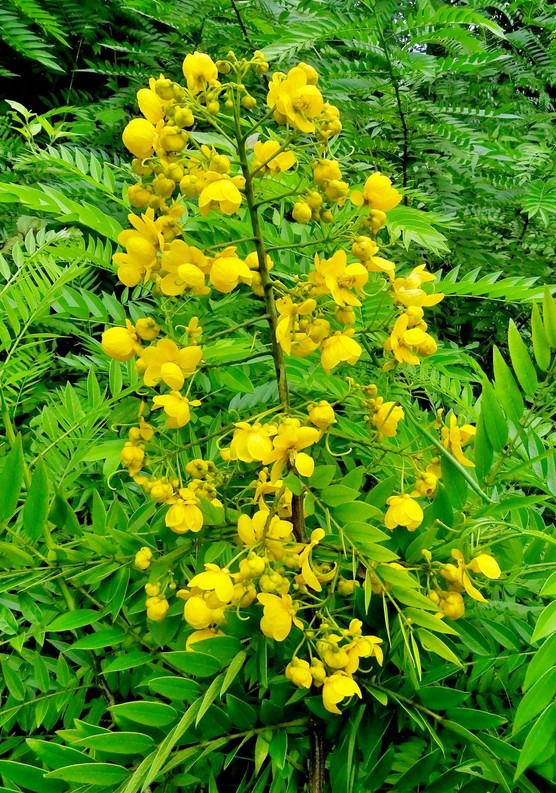Why in the News?
The Tamil Nadu Forest Department has successfully removed Senna spectabilis, a highly invasive tree species, from 1,963 hectares of the Mudumalai Tiger Reserve (MTR).

Mudumalai Tiger Reserve
|
About Senna spectabilis:
- Origin: A fast-growing deciduous tree native to tropical America, introduced in India as an ornamental and shade plant.
- Issues: Reaches 15–20 metres, produces thousands of seeds annually, spreading rapidly.
- Invasive Impact: Dense canopy suppresses native trees and grasses, causes food scarcity for herbivores, and reduces biodiversity.
- IUCN Status: Listed as ‘Least Concern’ but ecologically harmful in Indian forests.
How was the eradication achieved?
- Method: Threefold strategy- debarking mature trees, uprooting saplings with weed pullers, and mechanically clearing seedlings.
- Duration: Large trees dry up in about 18 months after debarking.
- Post-Removal Use: Felled trees used for paper production.
- Objective: Restore native flora, improve wildlife forage, and ensure long-term ecosystem recovery.
| [UPSC 2018] Why is a plant called Prosopis juliflora often mentioned in news?
Options: (a) Its extract is widely used in cosmetics. (b) It tends to reduce the biodiversity in the area in which it grows. * (c) Its extract is used in the synthesis of pesticides. (d) None of the above. |
Get an IAS/IPS ranker as your 1: 1 personal mentor for UPSC 2024

